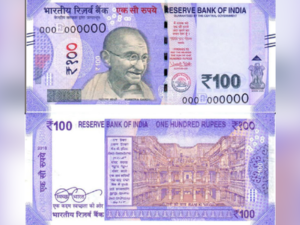‘Need Rs 100 crore to recalibrate ATMs for new Rs 100 notes’
 MUMBAI: The ATM operations industry today said introduction of a new Rs 100 note creates many challenges and an investment of Rs 100 crore will be required to recalibrate the country’s 2.4 lakh machines.
MUMBAI: The ATM operations industry today said introduction of a new Rs 100 note creates many challenges and an investment of Rs 100 crore will be required to recalibrate the country’s 2.4 lakh machines.
The introduction, which comes even as the industry is just about finishing the recalibration to dispense the newly introduced Rs 200 denomination notes, may only aggravate the pain, they said.
“We need to recalibrate ATMs for the new Rs 100 note. In India, therefore around 2.4 lakh ATMs will need to be recalibrated,” V Balasubramanian, the president of FSS who also serves as the director of industry lobby Catmi, said.
He added that the co-existence of both the new and the older versions of Rs 100 notes poses a challenge.
“The continuity of old notes, introduction of new notes through the ATM channel and their availability will determine whether to recalibrate or not,” he added.
Radha Rama Dorai, the managing director for ATM and allied services for FIS, said there is a likelihood of an imbalance between the supply of the new notes and the withdrawal of the old notes, especially in the hinterland.
“If the supply of the new currency is unable to fill the gap created by the withdrawal of the old currency, dispensation of Rs 100 currency notes through the ATMs will get affected till such time the imbalance exists,” she said.
Hitachi Payment Services’ managing director Loney Antony said the exercise of recalibration of the new Rs 100 note could take over Rs 100 crore and 12 months of time to completely recalibrate 2.4 lakh ATMs in the country.
“As the new Rs 200 note recalibration for all ATMs is still not completed, the recalibration of the new Rs 100 note could take longer, unless it is planned properly,” he added.
ALSO READ
“The ATM industry is just about finishing the calibrating the ATMS for Rs 200 denomination. This recalibration would again require investment in terms of cost and efforts,” Dorai said.
Euronet Services’ managing director Himanshu Pujara said while the introduction of the indigenous note is a proud moment, “the change in dimensions will make dissemination difficult as it will not be available through the ATM channel.”
All the ATMs will need to be calibrated, which is time consuming and a very big cost on an already struggling industry, he warned.
The RBI had yesterday announced that it will soon issue a new Rs 100 note in lavender colour having motif of ‘Rani ki vav’, a stepwell located on the banks of Saraswati river in Gujarat’s Patan.
“All Rs 100 banknotes issued earlier will also continue to be legal tender,” the central bank said.
The note has other designs, geometric patterns aligning with the overall colour scheme, both at the obverse and reverse.
Dimension of the banknote will be 66 mm x 142 mm, making it smaller than the current Rs 100 notes as against the current note’s dimension of 157 mm x 73 mm.

